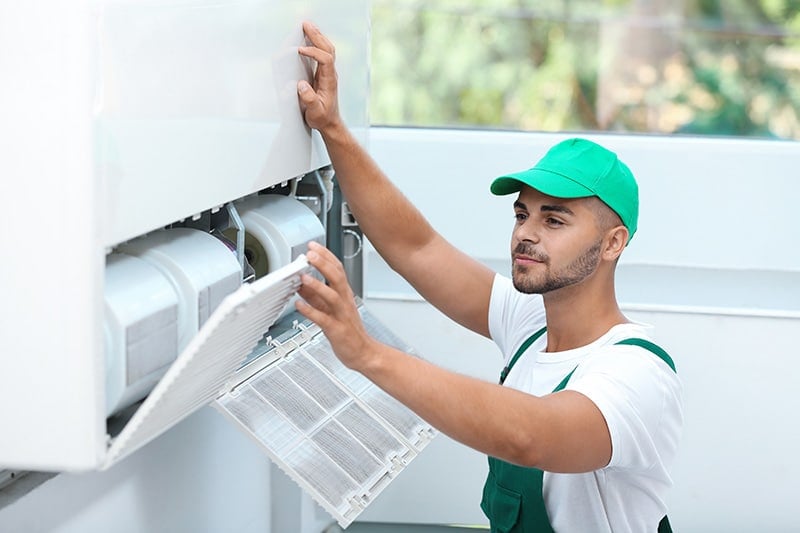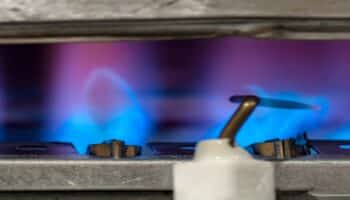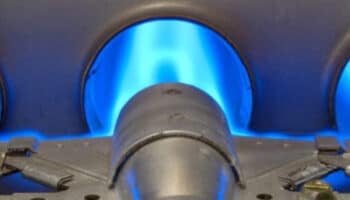Is your furnace running hotter than the Sun on a summer day?
You’re not alone! Although furnaces can be very convenient and help us stay warm during long, cold winters, they can sometimes get too hot and also make us uncomfortable.
I know how annoying it can be to have your furnace run too hot – especially when troubleshooting the appliance wasn’t part of your plans for the day. But don’t worry; you’ve come to the right place for answers. Below, you’ll find a list including 8 simple fixes you can try to stop your furnace from getting excessively hot and getting everything back to normal.
When your furnace is running too hot, it can be due to a lack of maintenance, it being oversized, dirty burners, restricted airflow, a bad limit switch, high gas pressure, or heat exchanger issues. The issue can also arise from a bad thermostat.
Keep reading to cool your furnace down!
Why Your Furnace Is Getting Too Hot
There are many possible reasons that can explain why your furnace is getting too hot; however, being furnaces such complex appliances, it’s hard to pinpoint a single one without closer inspection and taking the time to troubleshoot. I’ve found that often, there might be nothing wrong with the furnace, and it just needs cleaning to work normally.
But let’s not get ahead of ourselves; here’s what I recommend you consider to save yourself time, money, and effort while trying to determine what’s wrong with your appliance.
#1 The Furnace Needs Maintenance
The first thing you must consider when your furnace is running too hot is that it needs urgent maintenance. Like other household appliances, furnaces need to be cleaned frequently and have their air filters replaced. Otherwise, you’re likely to run into several issues over the years.
I’ll go into more detail below, but before we dive into more complex and specific issues, I’d like you to take the time to remember when was the last time you gave the appliance maintenance, as the answer can be of great help.
#2 The Furnace Is Oversized
Choosing the right size furnace for your living spaces is key, as it will determine how efficient the appliance is and how comfortable or uncomfortable it makes you when you use it.
Appliances are rated for sizes, as they have different capacities, typically measured in BTUs (British Thermal Units). If your furnace is oversized, it will quickly heat your living spaces. Sure, the appliance will cycle off when it reaches a certain temperature, but continuous cycling is bound to make you uncomfortable and greatly reduce the unit’s efficiency.
It’s very important that when you buy your furnace, you get a second opinion from a technician or someone who knows how to calculate the necessary BTUs for your living spaces to avoid buying an over or undersized unit.
#3 The Burners Are Dirty
Now that we’ve covered the necessary good practices and considerations that must be in place when buying and maintaining a furnace, let’s move on to your burners.
If your furnace is running too hot, and you’re sure it is the right size, there’s a good chance that the burners are dirty or even damaged. To work normally and provide proper oxygen delivery and heat distribution, your furnace burners need to be clear of obstructions and soot; otherwise, you’re likely to notice the flame flickers, doesn’t ignite, and more.
Typically, you’ll want to clean your furnace burners at least once every 2 months or as you deem necessary.
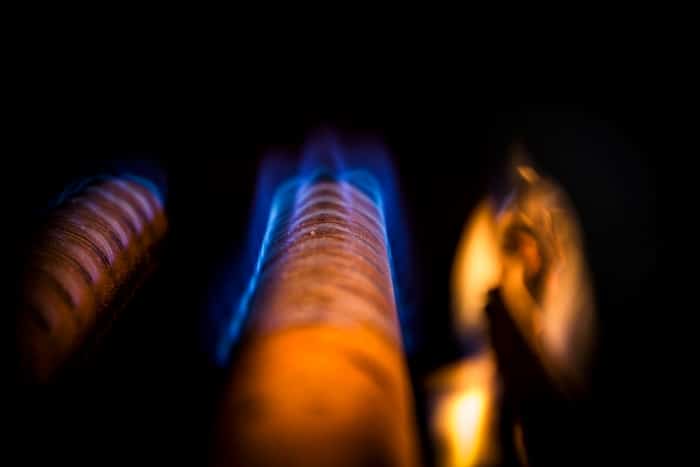
Solution: To clean the burners and check them for damage, my usual advice is to cut off the power and gas supply to the furnace and wait for it to cool down completely. Once the furnace is safe to work on, prepare a mixture of water and detergent and carefully scrub off any burner debris using a wire brush.
If you want to fully disinfect the area, you can also prepare a mixture of equal parts water and vinegar. After thoroughly cleaning the burners, please check them for any damage.
Damaged burners can have trouble with proper heat distribution and make the furnace burn hotter in some areas. Provided you spot damage, you’ll need to replace the burners. The cost of the replacement parts and repairs will vary depending on your furnace’s brand and model.
#4 There’s Not Enough Airflow
The next possible reason why your furnace is getting too hot is that there’s not enough airflow entering the appliance. As I mentioned above, your furnace needs enough incoming air to work and create the flame that provides the heat you’re used to; however, the exhaust of air is as important as the intake.
Dirty/clogged air filters and blocked chimneys are some of the most common culprits behind poor furnace airflow. Blocked air filters can force the furnace to work harder to deliver the results you’re used to, whereas a blocked chimney will make it nearly impossible to let some of the generated heat to the outside world.
Solution: My usual advice is to change your furnace’s air filter at least once per month if you suffer from allergies or own pets that shed excessive amounts of fur. There are different filter ratings; the higher the ratings, the more particles they filter.
As for the chimney, I recommend you gain access to it and check that:
- There are no fractures on the exhaust vent.
- There’s no snow, dry leaves, or other obstacles preventing proper air release.
If you find any debris on the exhaust vents, clear them and try using your furnace again after replacing the air filter.
#5 The Limit Switch Is Failing
Your furnace’s limit switch is one of its most important components. The switch is responsible for both activating the furnace’s blower assembly and shutting the appliance off to prevent overheating under extreme conditions.
However, if the limit switch is faulty, one of two things can happen. In some cases, you’ll be left with a furnace that doesn’t turn on because the switch is getting bad readings and thinks the appliance is overheating, whereas in others, the unit will overheat, and the switch will never shut it off.
The latter case is much more concerning, as it can allow your furnace to overheat, decreasing its lifespan significantly and putting you and your family at risk. Not to mention that you’ll be dealing with a very uncomfortable high temperature.
Solution: You can test the limit switch for continuity with a multimeter to determine whether it’s failing; however, in my opinion, it’s not worth the trouble. You’re better off considering the switch is faulty and buying a replacement online – there are switches for as little as $13.
That said, if your furnace uses a more expensive type of limit switch, I would recommend you test it to rule it out as a potential culprit. Provided you’re not comfortable testing and making the replacement yourself, please get in touch with a professional HVAC technician you trust for help.
#6 There’s High Gas Pressure
The pressure of the gas entering your furnace is critical to ensuring the appliance works as it’s supposed to. If there’s high gas pressure going into your furnace, you can experience several difficulties, including taller-than-normal flames, gas leaks, and, of course, excessive heat.
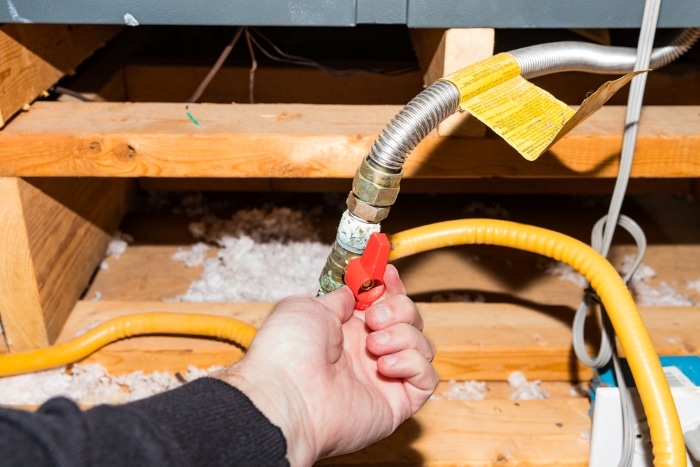
Solution: From what I’ve seen over the years, it’s possible to adjust the pressure of the gas entering your furnace from a master gas valve somewhere in your home. However, you should only make adjustments to the gas valve if you know exactly what you’re doing; otherwise, please call a technician and have them take a look.
Better safe than sorry!
#7 The Heat Exchanger Is Cracked
Moving on, a cracked heat exchanger can also be to blame when your furnace is running too hot. In a nutshell, the heat exchanger is responsible for letting air into the furnace through a series of pipes and controlling airflow to both fuel the flame and dispose of excess heat.
There are typically 2 different types of furnaces on the market: those with 1 heat exchanger and those with 2. In my experience, furnaces with a primary and secondary heat exchanger are much less likely to crack under the intense heat the furnace produces, reducing the chances of having to deal with flickering flames, yellow pilot lights, and excess heat.
Solution: To check your heat exchanger, you’ll need to refer to your User Manual to find the specific instructions to disassemble your furnace and access the part. If you no longer have it handy, you can use our free resource below.
#8 The Thermostat Is Faulty
The last possible reason why your furnace is running too hot is that its thermostat is faulty, and it’s getting incorrect readings from the appliance.
Your furnace’s thermostat is responsible for measuring the unit’s internal temperature and regulating it to keep it in good condition and without going overboard in terms of heat production. When your furnace’s thermostat is faulty, you can encounter several issues, including a flickering flame and extreme heat.
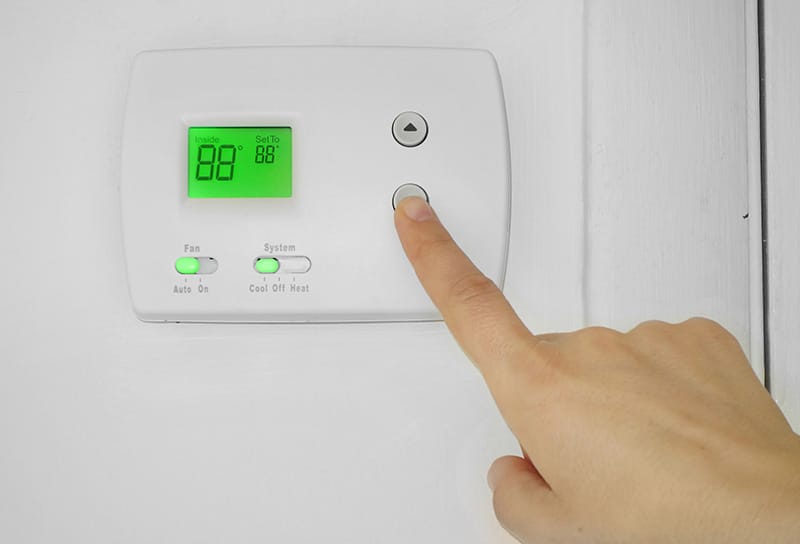
Solution: I’ve found that the simplest way to address the issue is by testing the thermostat and replacing it if there are signs that it’s faulty. To test the thermostat, you must first locate it inside the appliance and then use a multimeter to see if it has continuity. You can also test the component by adjusting the furnace’s temperature settings and observing carefully if the appliance changes temperature accordingly.
If you don’t have a multimeter or are unsure about the process, please get in touch with a professional for help. Depending on your furnace’s brand and model, the thermostat replacement can be more or less expensive.
Please check your User Manual for the model part number and use an online resource, such as AppliancePartsPros.com, to find the part and a ballpark estimate of prices.
How to Tell When the Heat Is a Problem
Now that we’ve discussed all the possible reasons why your furnace is running too hot, I hope you understand that not all issues are cause for concern, nor do they need immediate repair. However, some instances do require urgent attention.
If you notice the furnace is overheating too often or there are gas leaks in your home, those are signs that you must address the situation immediately to both keep yourself and your family safe and prevent the furnace from sustaining irreversible damage.
Giving your furnace maintenance and keeping the burners clean is a must, but it’ll never be as urgent as replacing a cracked heat exchanger, a bad limit switch, or adjusting your home’s gas pressure, for example.
Cooling Your Furnace Down
That about covers it!
When your furnace is running too hot for your liking, many possible explanations exist – from something as simple as dirty burners to a more complex issue, such as a faulty thermostat.
Luckily, as I hope this piece has helped you better understand, addressing the most common causes behind a furnace that’s running too hot can be easy and quick. More often than not, something as simple as replacing the limit switch and checking your gas pressure will do the trick.
Thanks for reading. If this article was useful and answered your most burning questions (pun intended), please check out our other resources and free guide below and consider subscribing to our newsletter.
Have a wonderful day!
-Craig.

